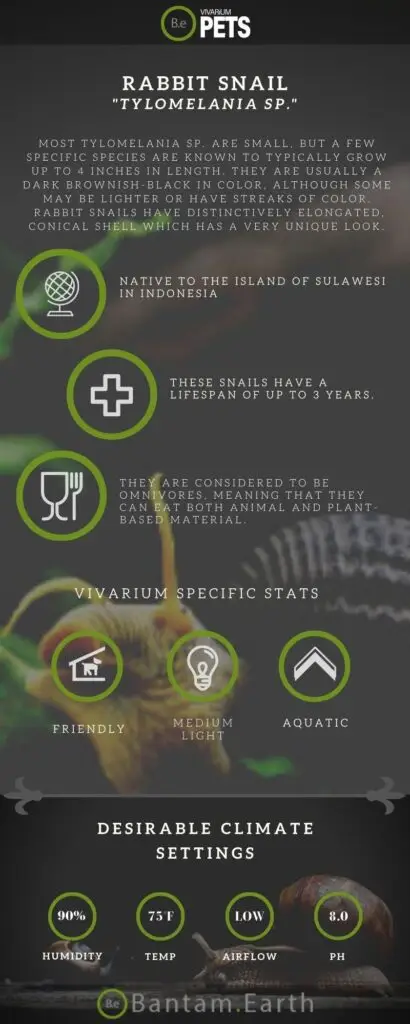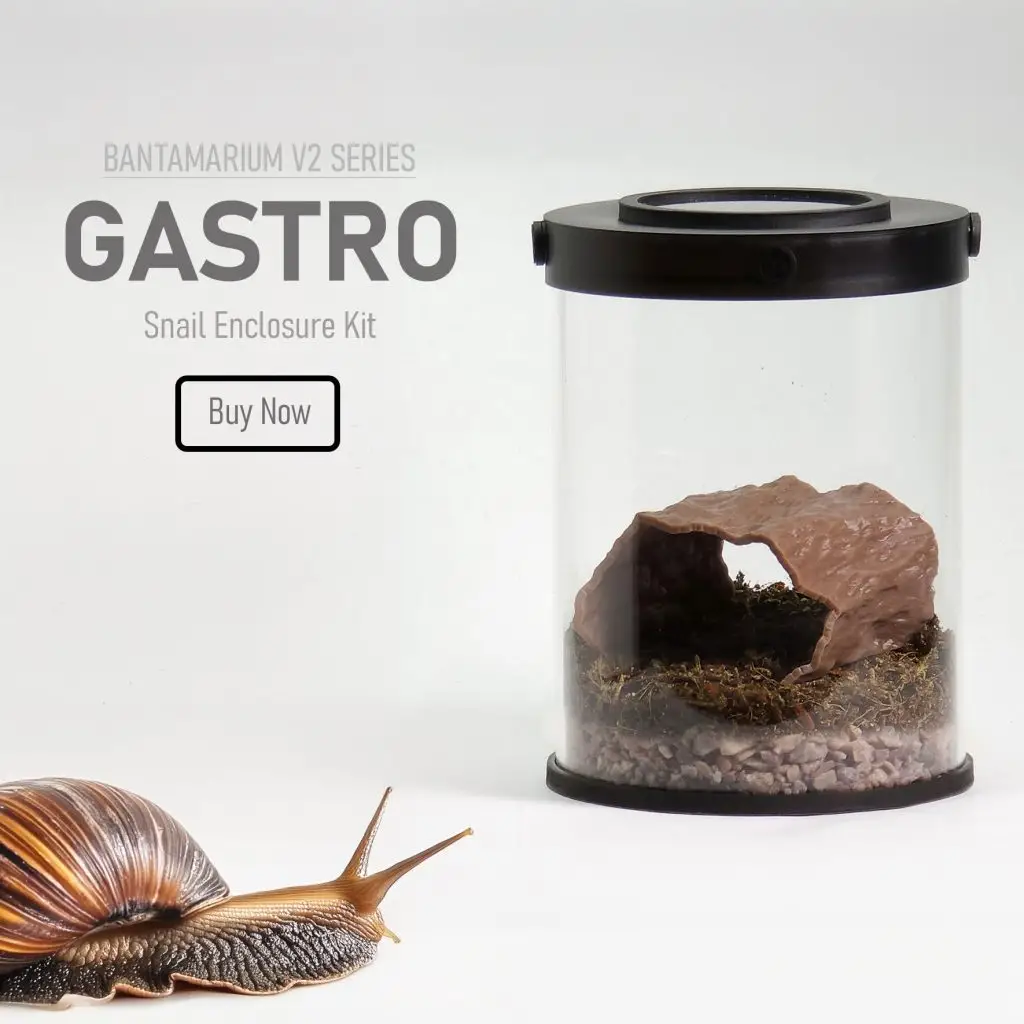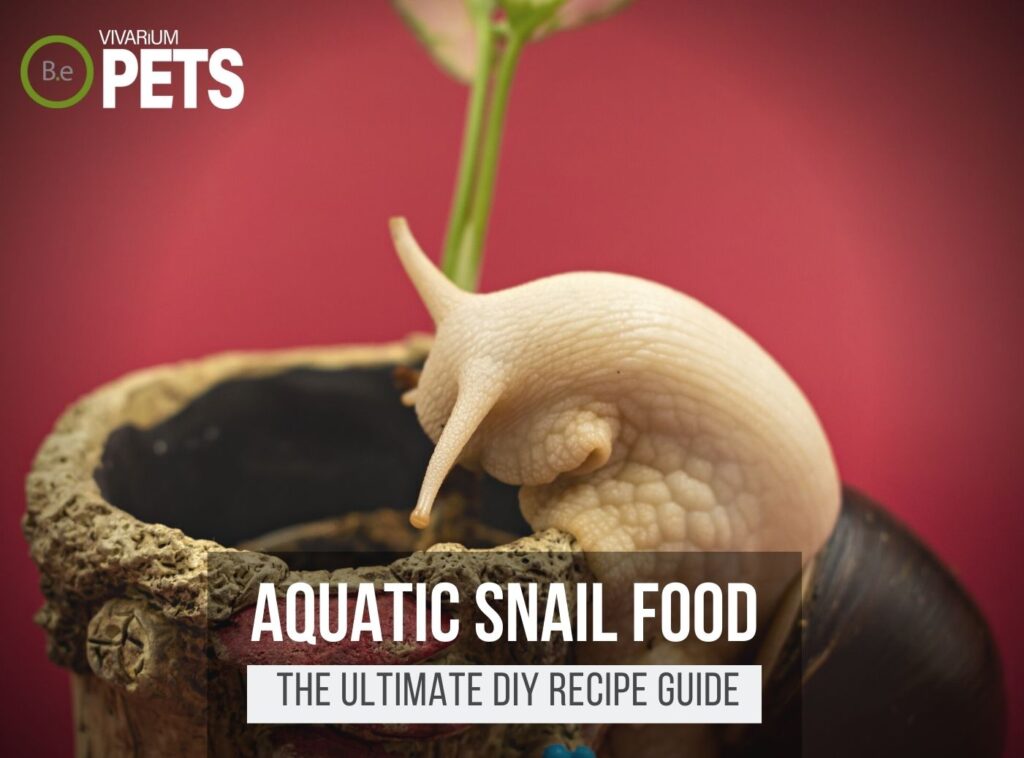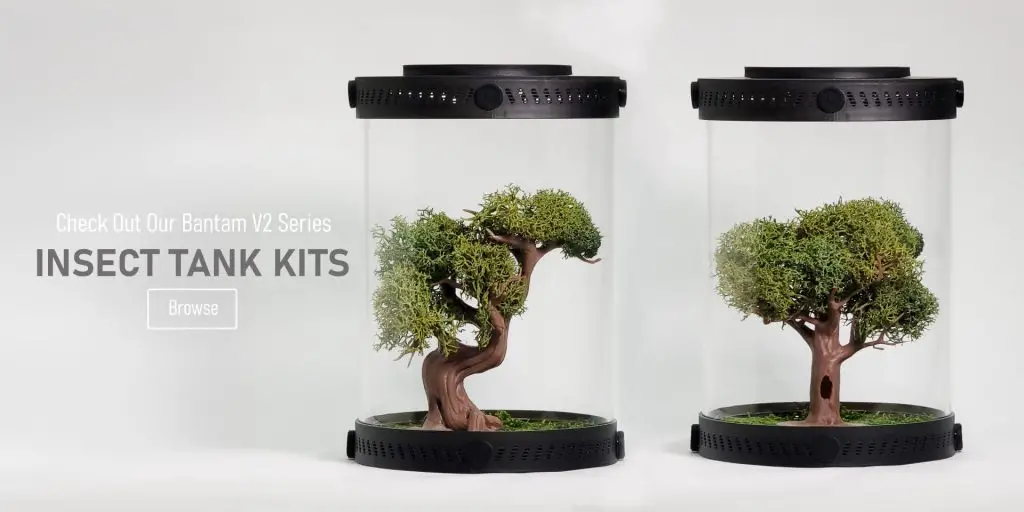Welcome to the most complete Rabbit Snail care guide on the internet! This article will take a deep dive into the entire Tylomelania species.
Rabbit Snails are interesting and unique aquarium snails that can make an interesting addition to an aquarium.
In this guide, we will provide you with all the essential information you need to know to help you properly care for Tylomelania sp. and ensure they thrive for years to come.
Table Of Contents:
ToggleWhat Are Rabbit Snails?
Rabbit Snails, also known by their scientific name Tylomelania sp., are a species of freshwater snails belonging to the family Pachychilidae.
These popular aquatic gastropods are 9, and their unique spiraling shell patterns have given them the common name “Rabbit Snails” due to their visual resemblance to rabbits.
Rabbit Snails have a peaceful and non-aggressive nature and are popular choices as aquarium companions as they scavenge around the substrate for debris and algae.
Create an ideal habitat for your pet snails with our Customizable Snail Enclosure Kits, which include everything you need to get started.
What Do Rabbit Snails Look Like?
Most Tylomelania sp. are small, but a few specific species are known to typically grow up to 4 inches in length.
They are usually a dark brownish-black in color, although some may be lighter or have streaks of color.
Rabbit Snails have distinctively elongated, conical shell which has a very unique look.
Their head and foot both contain a retractable proboscis, which they use to feed and move around.
They have four pairs of tentacles on their head and two pairs of gills for breathing underwater.
Benefits Of Using Rabbit Snails
Rabbit Snails are an excellent species to add to any aquatic vivarium, providing a plethora of benefits.
They are active scavengers and algae-eaters, helping to maintain healthy and balanced tank conditions.
They are also burrowers, which borrowers help to aerate and cultivate the aquarium substrate in the tank, and they are peaceful and non-invasive, making them an ideal choice for a community tank.
Rabbit Snails are also visually appealing, thanks to their unique shells and bright colors.
In addition, they are relatively low-maintenance, with straightforward requirements for tank setup and care.


Rabbit Snail Facts
The Tylomelania species of mollusks are freshwater snails native to Southeast Asia.
They are omnivorous scavengers, typically peaceful and unaggressive, with a lifespan of several years in captivity.
Reproduction is asexual; they lay eggs in capsule clusters and can self-reproduce in optimal environments.
Habitat
Rabbit Snails are a freshwater species of gastropod from the genus Tylomelania that originate from Sulawesi, Indonesia.
They inhabit the slow-moving rivers and streams around the island and prefer an aquatic environment with plenty of live, oxygenated water and an abundance of rocks and/or driftwood to provide shelter and grazing sites.
In their natural environment, Rabbit Snails live in social clusters often made up of many individuals, though they can also be kept as single or small groups in an aquarium.
Diet
In their natural habitat, Tylomelania sp. feeds on a variety of algae, detritus, biofilm, and a variety of animal foods.
In terms of diet, Rabbit Snails are considered to be omnivores, meaning that they can eat both animal and plant-based material.
In addition to these items, Rabbit Snails will also scavenge for biofilm which they will scrape off of hard surfaces such as rocks and stones.
This biofilm is believed to provide essential nutrition for these animals.
Temperament
Rabbit Snails are friendly and peaceful creatures that can make wonderful additions to large community aquariums.
They are non-aggressive and passive, so they get along well with human companions, other snails, and fish.
They have been known to climb onto their owner’s hands, but this behavior is usually a sign of curiosity rather than aggression.
Rabbit Snails are also quite tolerant regarding variations in water parameters, so you won’t need to worry about fluctuations in temperatures or pH levels affecting them.
Lifespan
Tylomelania sp. has a lengthy lifespan and can live up to 3 years in captivity with proper care.
Rabbit Snails go through three main life stages: Egg, Juvenile, and Adult.
They begin life as eggs which typically hatch within about a month. From there, the snails transition into the juvenile stage and start to develop their striking shell colors as they grow.
The juvenile stage lasts several months and eventually leads to the adult stage where the snails reach their full size and begin to reproduce.
During the adult stage, the snails can go into a more sedentary state and will slow down in their feeding, movement, and growth – this is their way of conserving energy and can extend their life span.
Breeding
Rabbit Snails typically mate during the night and prefer a temperature between 70 and 80 degrees F.
The males typically initiate mating by following and nudging a female snail until she stops in response.
After the female deposits a gelatinous mass with eggs, the males will fertilize them. The jelly-like substance created by the snails is a specialized adhesive that helps the eggs remain in place, typically around the leaf of a plant or its shells.
The eggs will hatch after up to 4 weeks, depending on the temperature of the water.
In some species, female snails can produce several offspring at a time without the aid of a male.
These offspring are usually copies of their parent, meaning that they are clones of their predecessors.
All offspring from both the sexual and asexual means of reproduction can mate and reproduce themselves once they reach adulthood, ensuring further generations of Rabbit Snails.
Where To Find Rabbit Snails
Rabbit Snails can be found for sale in pet stores or online, as well as in the wild in streams, rivers, and ponds in their native Southeast Asia.
When searching, look for snails with a round shape, operculum, striped shell pattern, and cone-shaped body.
If you are lucky enough to find some in the wild, make sure to collect them gently and never take more than you can keep.
Rabbit Snails also require extra care and attention, as they are sensitive to water parameters and do not tolerate sudden changes in their environment.
Before buying them, ensure you are familiar with the proper care requirements such as adequate tank size, substrate, filtration, and diet.
Rabbit Snail Care
Rabbit Snails require a tank of an appropriate size with the right substrate and filtration, as well as specific water parameters to stay healthy.
Feeding should involve various quality foods, given at the right intervals, and the tank should be regularly maintained and cleaned.
Breeding may also be possible with extra care.
Tank Requirements
Rabbit Snails are a tropical species and best kept in a warm, soft environment.
The ideal tank size is at least 10 gallons, with a covered top to retain as much heat and humidity as possible.
As an acellular species, Tylomelania sp. needs a soft pH between 7-8 and a preferred water hardness between 3 and 10 dGH, as well as a temperature between 70 and 80 degrees Fahrenheit.
When choosing a substrate, it is best to opt for small pebbles such as aquarium gravel or silica-based sand.
Rabbit Snails also benefit from exposure to UV light, and a small UVB light bulb placed near their tank can help them to properly metabolize their food and aid in digestion.
What Do Rabbit Snails Eat?
Feeding your Rabbit Snails is an important part of their overall care. In general, they are omnivores and will happily consume a variety of plant and animal matter.
You can feed them green algae-based spirulina flakes, Chinese algae wafers, blanched vegetables, blanched poultry and fish, and small pieces of shrimp, among other things.
When feeding your Rabbit Snails, make sure you feed them small amounts at a time, as they tend to over-eat and can become unhealthy if they consume too much.
You may also want to include other food items such as invertebrate pellets, snail food, and calcium supplements that can help maintain their health.
Additionally, make sure to provide plenty of hiding spots and decorations in your tank, as Rabbit Snails are timid, and hiding food helps prevent competition with tankmates.
If you’re more of an avid hobbyist like myself, be sure to check out my ultimate DIY aquatic snail food guide. I give a more in-depth explanation of the best foods and my favorite recipe.
Best Tankmates For Rabbit Snails
Rabbit snails make great tankmates for a variety of other aquatic animals, due to their peaceful nature, non-predatory eating habits, and their ability to help keep the aquarium clean.
These snails can get along well with many different species such as shrimp, corydoras, discus, plecos, and betta fish, just to name a few.
It’s important to note that tankmates should not be too large, as Rabbit Snails can’t handle the competition for food.
Their tankmates should also not be overly aggressive, which could cause stress for the snails.
Conclusion
Caring for Tylomelania sp. is a relatively straightforward and rewarding experience.
As long as you provide them with the right tank setup, substrate, water parameters, diet, and maintenance, you should have a happy and healthy group of pet snails that will stay with you for many years to come!
Create the ideal habitat for your snails with our species-specific soil mixes and Insect Enclosure Kits. These products provide everything you need for a successful and thriving snail habitat.
Frequently Asked Questions
Rabbit snails (Tylomelania sp.) can live with other snails as long as they are peaceful and have similar water parameter requirements.
However, it’s important to manage their breeding and ensure adequate space and resources for all the inhabitants.
Yes, rabbit snails (Tylomelania sp.) can help clean tanks by consuming algae and other organic debris, thus reducing the amount of work for the aquarist.
No, rabbit snails (Tylomelania sp.) are not considered to be an aggressive species, as they are normally peaceful and non–aggressive toward other tank inhabitants.
They are also known for forming small communities with other snails in their natural habitat.
Rabbit snails (Tylomelania sp.) primarily feed on algae and other organic debris, although they may occasionally graze on plants if their preferred food sources are not available or if they are hungry.
To prevent damage to plants, it’s important to provide them with a varied diet and access to other food sources and to choose snail-resistant plant species if necessary.
No, rabbit snails (Tylomelania sp.) are not known to overpopulate tanks since they are slow–growing creatures.
They also tend to reproduce in small numbers and do not usually become a problem for most tanks.
Yes, rabbit snails (Tylomelania sp.) will consume dead plant material as part of their diet.







